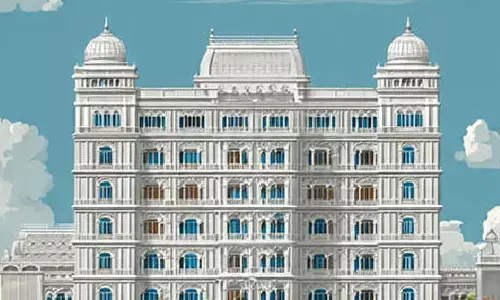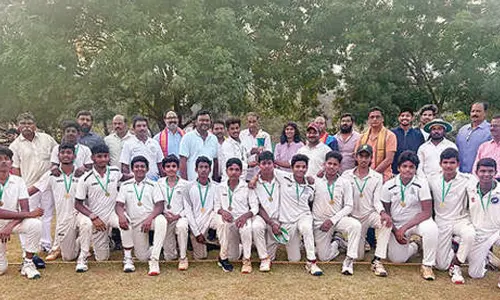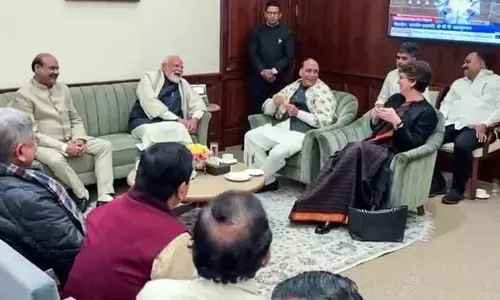Less dependence on imported military platforms will boost ‘Make in India’ initiative

In its latest update, the Indian defence ministry has indicated that nearly $74.7 billion have been earmarked for defence in 2024-25, which is 4.7 per cent more thanlast year’s outlay.
In its latest update, the Indian defence ministry has indicated that nearly $74.7 billion have been earmarked for defence in 2024-25, which is 4.7 per cent more thanlast year’s outlay.
Given the fast-deteriorating global geopolitical environment and the security challenges at the Indo-China border, a 4.7-per cent increase in MoD’s interim allocation would appear sorely inadequate.
Acquisition of 97 Tejas Mark 1 aircraft, amounting to Rs. 65,000 crore, is a priority, with inevitable budget overruns anticipated due to the intricate nature of domestic manufacturing. Striking this balance will need to be the focus.
Around 27.6 percent of the defence budget has been allocated for capital acquisition, which includes $2.84 billion to Defence, Research and Development Organisation (DRDO) to encourage domestic research and manufacturing of advanced weapons systems.
Significantly, New Delhi has created a $12 billion corpus fund to encourage “deep technology” research, which includes developing military fusion technologies in the domain of Artificial Intelligence (AI). The budgetary estimates are also indicative of the priorities of the Indian Navy, IAF and the Indian Army.There is also a compelling need to increase the number of warships in the Navy. Importantly, the defence ministry has highlighted that investments in Indian ship-building sector have risen by 82 per cent year-on-year and major state-of-the art naval platforms could be inducted in the coming months.
As regards IAF, the pressing need was to ensure that the country possessed 42 fully-functional squadrons. On the Army front, there was a need to upgrade the personal weapons held by the infantry. Reportedly, most of the infantry were operating INSAS (Indian Small Arms System) rifles, which needed to be replaced by the proven Kalashnikov AK-203 assault rifles. Moreover, AK-203 rifles are being manufactured in India using Russian technology under a transfer of technology pact. India has to keep pace with technological advancements and equipment to defend her territorial integrity and sovereignty.
In the arena of global geopolitics, self-reliance is both a sword and a shield. For India, this ambition materialises in the quest to establish a robust indigenous defence industry. The recent induction of the Light Combat Helicopter (LCH), the K9 Vajra-T self-propelled howitzer, the Akash-NG surface-to-air missilesystem, and the state-of-the-art INS Vikrant aircraft carrier underscore India’s commitment to developing home-grown weapon systems. The focus will likely be on engines for SU-30MKI aircraft and the procurement of Close-In Weapon Systems (CIWS), High-Power Radars (HPR), and BrahMos missiles, which are expected to be finalised in the first quarter. The Tejas fighter aircraft epitomises a cornerstone of India’s defence strategy. Delays in such projects could perpetuate dependence on foreign suppliers, thereby eroding the objective of self-reliance. Despite generous funding, there is no assurance that the government-owned HAL, which has seen a 1,300 per cent surge in its share price, can meet the stringent technological deadlines. The Tejas programme acts as a technological crucible, driving advancements in avionics, materials science, and combat systems. Adhering to the LCA deadlines will test the efficacy of the ‘Make in India’ initiative and bolster confidence among potential foreign buyers, though such interest has been rather scarce.
Indian firms are establishing a foothold in the global explosives and munitions market. Bharat Dynamics Limited (BDL) and other companies have reached critical mass. Over the past two years, the Army has halved its ammunition imports, thereby saving approximately $2.2 billion. The corporatisation of ordnance factory boards could further enhance their efficiency.
India now manufactures a comprehensive range of explosives, necessitating continued nurturing. Recently, India secured a $250 million project from Saudi Arabia. India also supplied modular charge systems for the US Army’s 150-mm guns. Indian ammunition has found a market in Armenia, while Munitions India, a public sector company, isa significant supplier to Israel.
The BrahMos missile, a unique collaboration between India and Russia, exemplifies strategic innovation that can distinguish India in the global arms market. Its supersonic speed and precision make it a formidable deterrent. Emerging markets, particularly in Africa, offer lucrative opportunities for India’s defence exports. India is one of the largest importers of arms globally. According to estimates, Indian armed forces are projected to spend around $130 billion in capital procurement by 2029. The government now wants to reduce dependence on imported military platforms and has decided to support domestic defence manufacturing. The defence ministry has set a $25 billion (Rs. 1.75 lakh crore) turnover goal in defence manufacturing in the next five years.




















